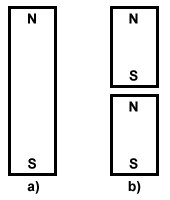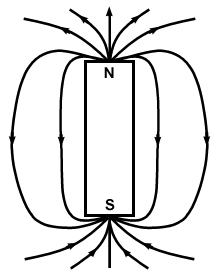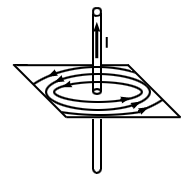Please wait while we process your payment
If you don't see it, please check your spam folder. Sometimes it can end up there.
If you don't see it, please check your spam folder. Sometimes it can end up there.
Please wait while we process your payment
Get instant, ad-free access to our grade-boosting study tools with a 7-day free trial!
Learn more



This site is protected by reCAPTCHA and the Google Privacy Policy and Terms of Service apply.
Create Account
Select Plan
Payment Info
Start 7-Day Free Trial!

Annual
2-49 accounts
$22.49/year + tax
50-99 accounts
$20.99/year + tax
Select Quantity
Price per seat
$29.99 $--.--
Subtotal
$-.--
Want 100 or more? Request a customized plan
You could save over 50%
by choosing an Annual Plan!

SAVE OVER 50%
compared to the monthly price!
| Focused-studying | ||
| PLUS Study Tools | ||
| AP® Test Prep PLUS | ||
| My PLUS Activity | ||
$22.49/month + tax
Save 25%
on 2-49 accounts
$20.99/month + tax
Save 30%
on 50-99 accounts
| Focused-studying | ||
| PLUS Study Tools | ||
| AP® Test Prep PLUS | ||
| My PLUS Activity | ||
No Fear provides access to Shakespeare for students who normally couldn’t (or wouldn’t) read his plays. It’s also a very useful tool when trying to explain Shakespeare’s wordplay!
Erika M.
I tutor high school students in a variety of subjects. Having access to the literature translations helps me to stay informed about the various assignments. Your summaries and translations are invaluable.
Kathy B.
Teaching Shakespeare to today's generation can be challenging. No Fear helps a ton with understanding the crux of the text.
Kay H.
No Fear provides access to Shakespeare for students who normally couldn’t (or wouldn’t) read his plays. It’s also a very useful tool when trying to explain Shakespeare’s wordplay!
Erika M.
I tutor high school students in a variety of subjects. Having access to the literature translations helps me to stay informed about the various assignments. Your summaries and translations are invaluable.
Kathy B.
Teaching Shakespeare to today's generation can be challenging. No Fear helps a ton with understanding the crux of the text.
Kay H.
Create Account
Select Plan
Payment Info
Start 7-Day Free Trial!
You will only be charged after the completion of the 7-day free trial.
If you cancel your account before the free trial is over, you will not be charged.
You will only be charged after the completion of the 7-day free trial. If you cancel your account before the free trial is over, you will not be charged.
Order Summary
Annual
7-day Free Trial
SparkNotes PLUS
$29.99 / year
Annual
Quantity
51
PLUS Group Discount
$29.99 $29.99 / seat
Tax
$0.00
SPARK25
-$1.25
25% Off
Total billed on Nov 7, 2024 after 7-day free trail
$29.99
Total billed
$0.00
Due Today
$0.00
Promo code
This is not a valid promo code
Card Details
By placing your order you agree to our terms of service and privacy policy.
By saving your payment information you allow SparkNotes to charge you for future payments in accordance with their terms.
Powered by stripe
Legal
Google pay.......



Please wait while we process your payment

Sorry, you must enter a valid email address
By entering an email, you agree to our privacy policy.
Please wait while we process your payment

Sorry, you must enter a valid email address
By entering an email, you agree to our privacy policy.
Please wait while we process your payment

Your PLUS subscription has expired
Please wait while we process your payment
Please wait while we process your payment

Fields of Permanent Magnets and Straight Wires
We begin looking at the sources of magnetic fields by looking at the most simple cases: permanent magnets and straight wires.
Permanent magnets are the most familiar sources of magnetic fields. A compass needle is a permanent magnet, which itself reacts to the permanent magnet in the earth's axis. Unfortunately, the fields of permanent magnets are very hard to calculate, and require an understanding of complex ferromagnetic phenomena, belonging as much to atomic theory as to electromagnetism. Here we will simply give a qualitative description of the magnetic fields of permanent magnets.
In essence, a permanent magnet is a piece of metal with a "North Pole" and a
"South Pole". Any magnetized piece of metal has both poles; no magnet can exist
with only one pole. Since magnetic charge does not exist, there is no isolated
concentration of magnetic charge in an object. So why not simply take a magnet
and split it in half, thus separating the north and south ends? Well, when we
try it, two smaller, identical magnets are produced, shown below. Again, the
north or south end of a magnet cannot be isolated.

Even though we cannot describe quantitatively the field of a permanent magnet,
we can show its shape:

Like magnets, current-carrying wires also create magnetic fields. Wires of and any and all shapes create a magnetic field, but straight wires are the easiest to work with. After going through some calculus we will tackle more complex situations, but for now we look at the most simple case: the straight wire.
As we know, the magnetic field must always be perpendicular to the direction of
the current; in terms of a field around a wire, this means that the field lines
must follow a circular path about the wire, as shown below.

Please wait while we process your payment





